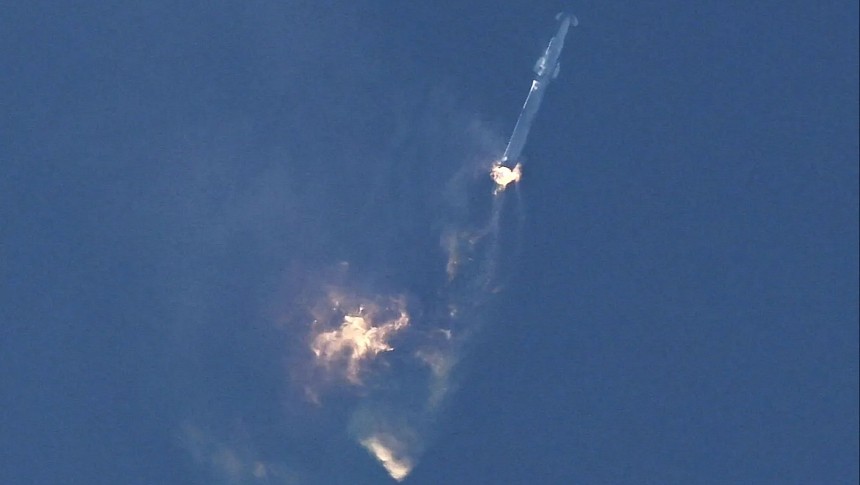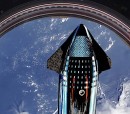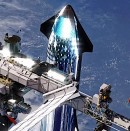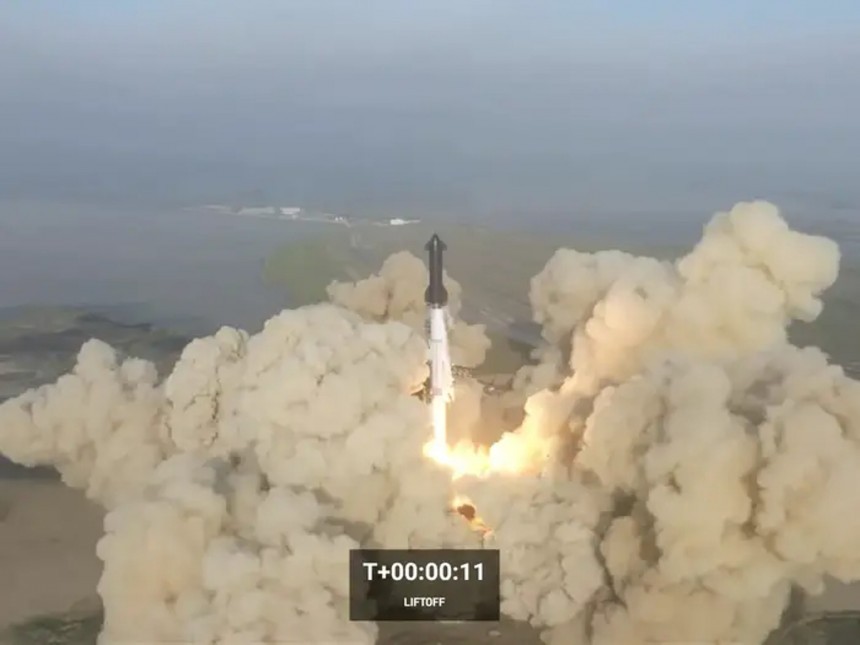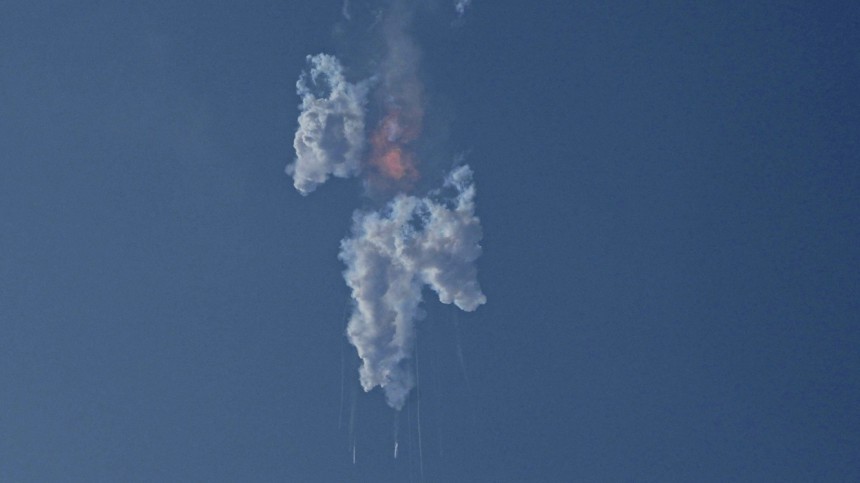Rocket science will always be rocket science, no matter how rich, notable, and borderline larger-than-life SpaceX's leading man truly is at the moment. That's why when the first SpaceX Starship Orbital test didn't go anywhere near according to plans, it was just another chalk-up in the loss category among a sea of doomed rockets that came before it. Admittedly, it did make for one spectacular light show.
At roughly 8:33 a.m. Central Time on the morning of April 20th, 2023, SpaceX's Starship booster B4 and spacecraft S20 fired to life on the launch pad in Boca Chica, Texas. As all 30-plus Raptor-class methane-oxygen rocket engines roared to life, the hopes and dreams of a generation longing to make its way to the Moon and beyond looked in abject amazement as the 390-foot (118.8-m) tall spacecraft cleared the tower and made its way towards the heavens.
With upwards of 16,700,000 lbs of thrust to play with at launch, all seemed to be operating nominally as the first Starship orbital test flight got underway. The first three to five minutes are often the most perilous in a space launch. A period in which a rocket must endure the brunt of the Earth's thick lower atmosphere and endure a period known as Max Q, or the point where the aerodynamic stresses imposed on a rocket during launch are at the greatest they'll be the entire mission.
For the first two minutes and 49 seconds, it appeared that the Starship was managing the time after liftoff just right. Only after it had expended almost all of its 3,400 tons of cryogenic methane and oxygen propellant did it become apparent something was wrong. Though the main engines on Starship's first stage managed to shut down without issue in preparation for stage separation, said separation never took place.
Instead, the total propulsive thrust of the vehicle, spent first stage and all, plummeted to zero as the spacecraft reached the apogee of its now sub-orbital flight trajectory. At this point, Starship began to tumble downwards in a barely controlled state of chaos. As the spacecraft's free fall began to take on an uncontrollable spin, SpaceX mission control opted to engage Starship's remote flight termination system, making the thing light up like the Fourth of July.
As the now-destroyed vehicle fell back to Earth in pieces over the Gulf of Mexico, it became apparent that SpaceX was about to be forced back to the drawing board. With the success of its first orbital test now up in smoke, it means that NASA's Space Launch System (SLS) remains the most powerful super-heavy booster rocket ever successfully launched. But you won't find too many people getting down in the dumps over SpaceX's failure. In fact, audible applause was prominent in SpaceX's live stream of the launch event as Starship exploded into a million pieces.
That's certainly not something most of us are used to when it comes to NASA's launch failures, as they tend to take on a more somber tone in those cases. But what this should signal to the average person is that SpaceX isn't afraid of failure in the same way NASA tends to be. Those who remember how Artemis I was scrubbed upwards of three times understood how if the SLS's first launch were to be a failure, it could put the future of the whole government-funded program in grave jeopardy.
This is not a worry with a fully privatized aerospace company. So long as Elon Musk has the assets and the capital to keep Starship's production lines operational, SpaceX can test fly and blow up as many Starships as the FAA will allow them to launch. It's a modus operandi ostensibly different from the strict "test as you fly" doctrine NASA's incorporated into its own spaceflight operations since at least the days of Apollo and quite possibly even before then.
As for what happens going forward, the path of action still remains somewhat unclear. It's doubtful that federal regulators will allow another Starship craft to launch so soon after such a notable failure. But in the meantime, words of encouragement from NASA's administrator Bill Nelson appear to indicate a friendly competition between the American space agency and its most important private contractor. After all, both Starship and SLS will be vital components of NASA's first lunar landing attempt in over 50 years, the Artemis III mission set to launch in 2025.
If this mission is to launch on time and according to plans, both NASA and SpaceX are going to need to step their games up. Interpersonal rivalries are nothing but a detriment to a space program. That's why you won't find any NASA personnel quipping or jesting at SpaceX about their failure today. At the end of the day, NASA and SpaceX will be like two peas in a pod for the foreseeable future.
With upwards of 16,700,000 lbs of thrust to play with at launch, all seemed to be operating nominally as the first Starship orbital test flight got underway. The first three to five minutes are often the most perilous in a space launch. A period in which a rocket must endure the brunt of the Earth's thick lower atmosphere and endure a period known as Max Q, or the point where the aerodynamic stresses imposed on a rocket during launch are at the greatest they'll be the entire mission.
For the first two minutes and 49 seconds, it appeared that the Starship was managing the time after liftoff just right. Only after it had expended almost all of its 3,400 tons of cryogenic methane and oxygen propellant did it become apparent something was wrong. Though the main engines on Starship's first stage managed to shut down without issue in preparation for stage separation, said separation never took place.
Instead, the total propulsive thrust of the vehicle, spent first stage and all, plummeted to zero as the spacecraft reached the apogee of its now sub-orbital flight trajectory. At this point, Starship began to tumble downwards in a barely controlled state of chaos. As the spacecraft's free fall began to take on an uncontrollable spin, SpaceX mission control opted to engage Starship's remote flight termination system, making the thing light up like the Fourth of July.
That's certainly not something most of us are used to when it comes to NASA's launch failures, as they tend to take on a more somber tone in those cases. But what this should signal to the average person is that SpaceX isn't afraid of failure in the same way NASA tends to be. Those who remember how Artemis I was scrubbed upwards of three times understood how if the SLS's first launch were to be a failure, it could put the future of the whole government-funded program in grave jeopardy.
This is not a worry with a fully privatized aerospace company. So long as Elon Musk has the assets and the capital to keep Starship's production lines operational, SpaceX can test fly and blow up as many Starships as the FAA will allow them to launch. It's a modus operandi ostensibly different from the strict "test as you fly" doctrine NASA's incorporated into its own spaceflight operations since at least the days of Apollo and quite possibly even before then.
As for what happens going forward, the path of action still remains somewhat unclear. It's doubtful that federal regulators will allow another Starship craft to launch so soon after such a notable failure. But in the meantime, words of encouragement from NASA's administrator Bill Nelson appear to indicate a friendly competition between the American space agency and its most important private contractor. After all, both Starship and SLS will be vital components of NASA's first lunar landing attempt in over 50 years, the Artemis III mission set to launch in 2025.
